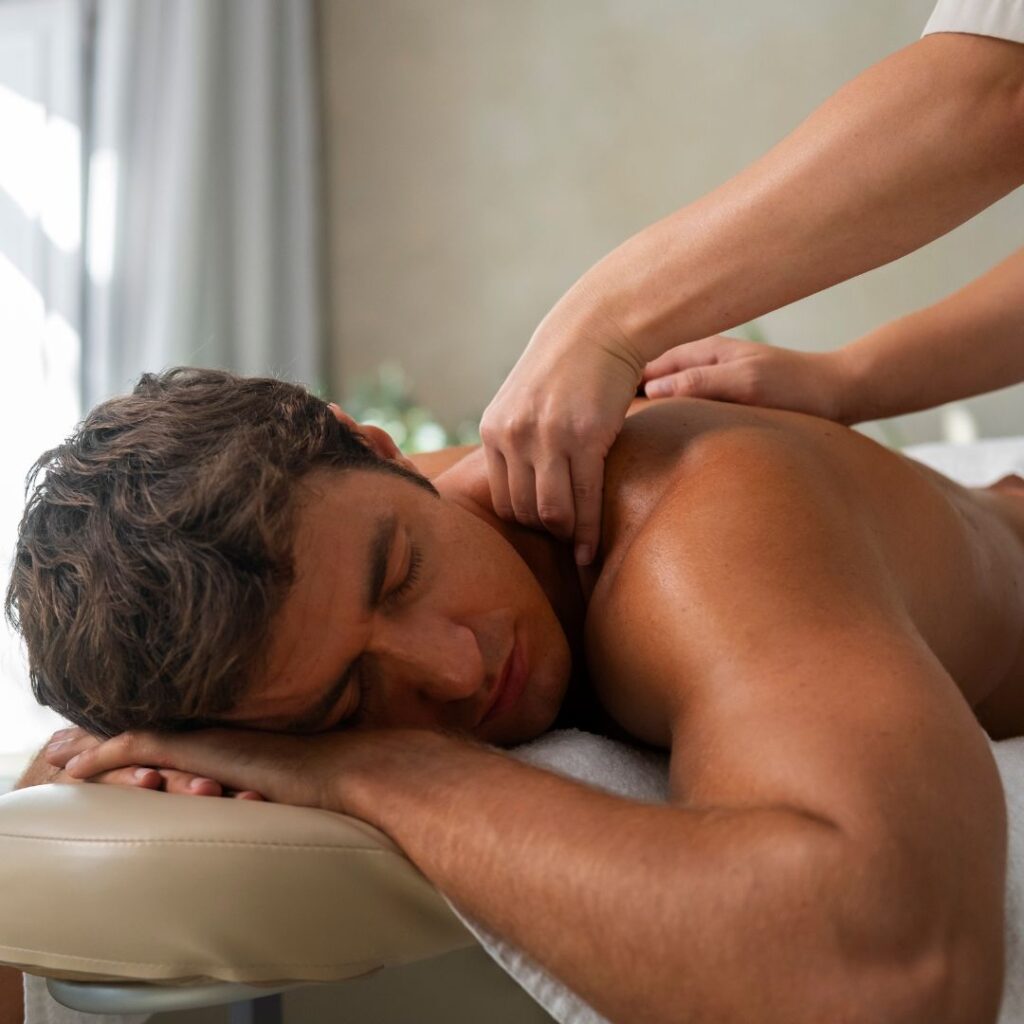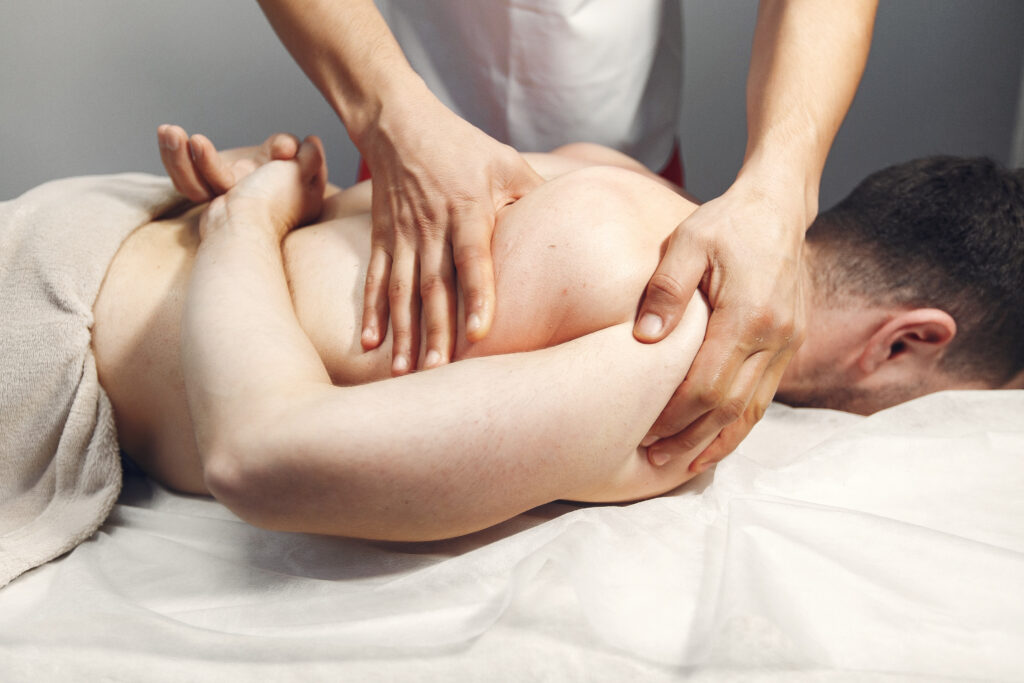One of the most prevalent symptoms associated with exercising is post-exercise muscle soreness. Your muscles tend to pay the price, whether you have just lifted something heavy or completed an extreme cardio session. That soreness, called Delayed Onset Muscle Soreness (better known as DOMS), comes from micro-tearing of your muscle fibers as they adapt to higher levels of stress.
Some muscle soreness is a sign of progress, but too much soreness can hinder recovery and make it less appealing to engage in activity. This is where role of deep tissue massage therapy can truly help.

What Makes Deep Tissue Massage Different?
Deep tissue massage therapy goes deeper than a regular relaxation massage by working on the deeper layers of muscle and connective tissue. The therapist uses slow, deep pressure to dismantle adhesions (knots) and release tension from overuse or overactivity.
This targeted method is used for rearranging muscle fibers, increasing flexibility, and enhancing blood flow. The result? Quicker recovery, better movement, and long-term avoidance of injuries.
How the Role of Deep Tissue Massage Supports Post-Workout Recovery
Deep tissue massage therapy offers several recovery benefits following intense bouts of exercise:
- Relieves muscle tightness: The technique alleviates chronic tension, loosening tense spots that can often lead to soreness after working out.
- Circulation Boost: Good blood flow carries oxygen and nutrients to injured tissues, which helps with faster recovery.
- Reduces inflammation: Targeted pressure clears away metabolic byproducts, such as lactic acid, that cause soreness.
- Increases Flexibility: Consistent practice keeps tight muscles loose and helps you avoid strains/injuries in the future.
- Releases muscle tension: Massage encourages muscles to relax and helps the body and mind recover physically and mentally.
Deep Tissue Massage is not just a relaxation; it balances your body and enables your muscles to function better in the long run.
Can Deep Tissue Massage Prevent Injuries?
Yes, it can. The preventive property of deep tissue massage therapy is the most important benefit of incorporating it into your routine. This technique reduces frictional contact between the muscle fibers and the joints by spotting muscular imbalances at an earlier stage. It increases mobility as well, which lessens unnecessary stress in training.
For athletes, runners, and fitness professionals, regular sessions can be part of a sustainable performance boost. In the long run, this preventative step prevents recurrent aches, strains, and chronic back pain.

Is Back Pain Massage the Same as Deep Tissue Massage?
Not strictly, but Back Pain Massage treatments commonly incorporate deep tissue techniques. For soreness after working out predominantly in your back, therapists work with similar strokes (all pressure-based) to relieve tension in areas such as the spine, shoulders, and lower back.
That not only eases tension but also encourages spinal alignment and improved posture. If you suffer from low back pain from lifting weights (or any form of high-impact exercise), you may feel significant improvement after just a few Back Pain Massages.
How Often Should You Get a Deep Tissue Massage?
Here is how hard and how often you train, as well as your needs for recovery:
For more active people or if you go to the gym, every 2 to 3 weeks is ideal in order to keep your muscles healthy.
If you are a level for athlete or training day in, day out, having a regular session once a week would offer the best benefit in terms of optimal performance and tightness doesn´t build up.
For casual exercisers, once every four weeks keeps the muscles limber and pain-free.
Your massage therapist may also modify deep tissue massage therapy session length and intensity according to how your body responds and your recovery objectives.
How to Prepare for a Deep Tissue Massage Session?
Get to most of your deep tissue massage therapy:
- Drink water before and after the massage, as this helps flush out toxins that were released.
- Do not take large meals just right before the meeting.
- Mention any sore spots or uncomfortable areas to your therapist.
- Warm up with a nice shower after the session to relax your muscles even more.
- Avoid going to the gym right away — allow your body time to rest after the massage.
- This will maximize the benefits and give your body the full therapeutic effect.
What Results Can You Expect After Your Session?
Upon leaving your session, you might notice a lighter, looser, and more flexible feeling. Minimal soreness is expected, but short-lived it typically goes away in 24 to 48 hours. Most people feel more mobile, less stiff, and generally more relaxed in the body within a few days.
Deep tissue massage therapy also has long-term benefits, such as less re-injury, improved posture, and better performance in your workout.
Key Takeaways
- Soreness after a workout is caused by those little muscle tears.
- Deep tissue massage involves manipulating deeper layers of muscle and tissue and is intended to release tension and promote blood flow in a deeper layer of the relaxation response.
- It aids in the reduction of inflammation, flushes out lactic acid, and reduces muscle recovery time.
- Massage for Back Pain: It relieves soreness due to weight lifting or strain due to posture.
- Having regular training sessions increases mobility, reduces the risk of injury, and bolsters performance.
Frequently Asked Questions (FAQs)
Q1. Deep tissue massage after every workout: good or bad?
You don’t have to do it every session. Give your muscles a day or two after a hard workout before booking a massage.
Q2. Is it appropriate to use stretching and Deep tissue massage altogether?
Yes. While massage therapy helps relieve muscle tension and helps to get a good recovery, stretching complements by having supple muscles.
Q3. Does deep tissue hurt?
When deep pressure is applied, you might feel discomfort, but you should never experience unbearable pain. Share with your therapist where your level of comfort is.
Q4. How long is a typical session?
Most deep tissue massages range from approximately 60 to 90 minutes, depending on the treatment area and muscle state.
Q5. What about chronic back pain (eg, deep tissue massage)?
Absolutely. Consistent sessions help relax tension, and correct muscle imbalances and posture — eventually delivering long-term results in back pain relief.
Rejuvenate and Recover at Mali Healing Spa
You should still feel your best even after a tough workout that leaves you sore. Recover faster, move free, and perform better with individualized deep tissue massage therapy designed around your fitness level and muscle needs.
Mali Healing Spa is different – our expert therapists have been highly trained in advanced techniques that melt away tension and restore balance to your body. That said, book your next deep tissue or back pain massage today and treat your muscles to the recovery they really need.




